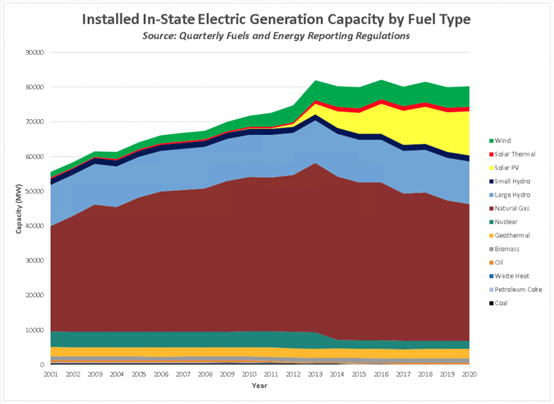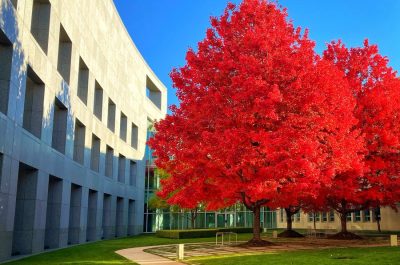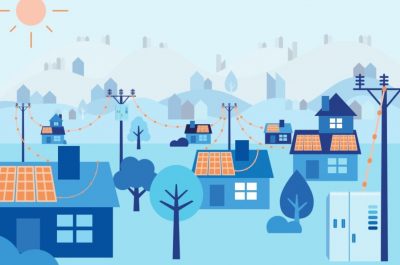California Dreamin’
On a dreary day in Melbourne as the leaves are turning brown and the sky is grey, it is easy to think about the sun, sand and warmth of California. La Nina has meant summer in Australia was fleeting and already we seem to be heading towards winter sooner than we’d like.
As we pull out a second blanket for the bed, California (although fairly temperate even throughout winter) is heading towards summer.
We have previously written about the challenges the Texan electricity grid face, and now we turn out attention to California.
California has the second largest state electricity market in the United States after Texas. It is the most populous and has the second biggest economy.
The Californian electricity system delivers 224 TWh per year, a little more than Australia’s National Energy Market (NEM) that delivers 204 TWh. Renewables make up about 40 per cent of the NEM’s capacity and it’s a similar story in California. Two challenges both markets are facing before much of the world are curtailment of excess renewable generation and rapid ramping in the late afternoon – California’s record is a 17.6GW increase in demand between 3pm and 6pm on 11 March this year.
Geographically, California also has a lot in common with Australia’s eastern coast. Both are characterized by hot summers and fairly mild winters. Both have a mountain range running its length with most of its population living in urban coastal areas and a drier more arid interior.
Bushfires, like in Australia wreak havoc each year and as the effects of climate change increase, more and more homes and even lives are lost as fires increase in both frequency and ferocity, encroaching closer to urban areas more than ever before.
With these challenges before us the shift to net zero emissions is imperative.
Both Australia and California are adopting renewable energy generation at a rapid rate. Solar panels haven’t had their day in the sun like Australia, but over 1.2 million homes do have them and there are solar and wind farms across the state. California also has geothermal resources in their energy mix, unlike Australia.
Like Australia, large scale renewable energy is generated in pockets or corridors often away from cities or towns. High voltage transmission is needed to unlock the renewable generation potential and transport the clean energy from where it is generated to where it is needed.
Targets, transition and transmission
So what can we learn from our American counterparts?
California has been making strides towards a clean energy future for decades and prides themselves on being a long-standing leader in the fight against climate change and adopting energy efficient practices. As such California has the second lowest energy consumption per capita in the United States and is top producer of solar, geothermal and biomass renewable energy.
Californian Energy Commission https://www.energy.ca.gov/data-reports/energy-almanac/california-electricity-data/electric-generation-capacity-and-energy
California has enforceable energy targets in place to decarbonize their energy sector. Legislated mandates require renewable energy and zero-carbon resources supply 60 per cent of all electricity by 2030 and 100 per cent by 2045.
These ambitions are impressive and make a case for state-based targets and go-it-alone policies (Federalism, state income taxes and funding mechanisms aside).
Transmission Outlook
Earlier this year, CAISO released its first 20-Year Transmission Outlook. Running in parallel with its normal ten-year outlook, California has developed a blueprint that provides a comprehensive longer-term analysis about the future high-voltage transmission needs of California. In a process with significant parallels with AEMO’s Integrated System Plan (ISP), the Outlook forecasts the future energy usage of the state and the future energy resources that will be entering the grid over the next two decades.
The amount of electricity projected to be needed two decades from now is almost three times what the grid has today and will include renewable energy from utility scale solar, storage, geothermal, offshore wind plants and sustainable resources from out-of-state and perhaps technologies that are not yet fully developed.
Renewable generation is coming online in California at an astonishing rate. In 2021, CAISO reported 79 clean energy projects entered the grid, the most it had had in a single year. California is expecting 120 gigawatts of clean power must be added to the grid to the reach 100 per cent renewable power by 2040, with 15GW.
Implications for Australia
Just like AEMO’s Integrated System Plan (ISP), CAISO has recognised that we cannot just build transmission infrastructure for today’s energy needs but for the energy needs of a future world where electrification leads to much higher electricity use.
Also similar to Australia, CAISO notes that planning for tomorrow’s energy grid doesn’t come cheaply. The draft outlook estimates that $30 billion will be needed to complete the high voltage transmission capacity needed to allow all that renewable energy generation onto the grid.
One-third of this is upgrades to the existing Californian grid, a quarter is to connect major new offshore wind developments and the largest part is on interconnectors to other states with strong wind resources.
A line from CAISO about the timing challenge could have come straight from the ISP: “With typical lead times of eight to 10 years for many of these transmission projects, it is critical to expand the planning horizon and bring together a wide cross-section of stakeholders to identify and set priorities for different possible solutions.”
The clear message from CAISO’s outlook, one which resonates strongly here in Australia too, is that there’s no transition without transmission.




